These exercises are commonly seen yet, if you do them, you stand a good chance of hurting yourself. Find out what they are and why they can injure you.
All exercises are not created equal. Some exercises are good, some exercises are great, and some exercises are an injury just waiting to happen. Knowing which exercises to avoid can save you many months if not years of pain and frustration.
Exercise 1. Upright Barbell Row
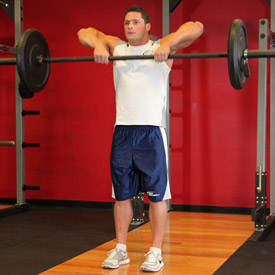
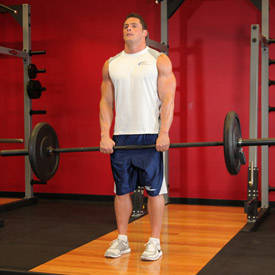
The upright row exercise is done to develop the shoulders and traps. Holding a barbell or dumbells in front of your with a close, overhand grip, you pull the weight up to your chest, keeping it close to your body, leading with your elbows.
The upright row is one of the most harmful exercises you can expose your shoulders to. The problem with the exercise lies in the position your arms must be in in order to perform the movement. This position is called "internal rotation."
To demonstrate internal rotation, hold your arms straight out to the sides with your palms down. Now rotate your hands forward as if you were pouring out a glass of water in each. To do the upright row, the arms are bent at the elbow then internally rotated.
Internal rotation itself is not necessarily bad for your shoulders. The problem comes when you raise the arms up and add resistance in that position. Every time you raise the weight, a small tendon in your shoulder gets pinched (known as impingement) by the bones in the shoulder.
This may not hurt immediately; it may not even hurt for a long, long time. The problem is the tendon will gradually become worn down and damaged. You may not even know you have a problem until one day the tendon snaps!
Instead Do These
Exercise 2. Wide-grip lat pulldown


This exercise is done to work the muscles of the back. While the exercise itself is actually effective for working the back, the problem with the exercise lies in what it can do to your shoulders.
In the previous exercise, I talked about internal rotation of the shoulders. The problem with the behind-the-neck pulldown lies in "external rotation." Going back to the arms out to the side example, instead of pouring water forward, rotate your arms backward so that your palms are facing up. It's basically the opposite movement to internal rotation.
To do the behind-the-neck pulldown as normally instructed, you must externally rotate your shoulders as much as possible. This is a very delicate position for your shoulders.
The supporting muscles of the shoulders (known as the rotator cuff) are not in a good position to stabilize the joint and injury to those supporting muscles can result, which can lead to further injury in the connective tissue of the joint.
On top of that, since most people do not have enough shoulder flexibility to get a straight line of pull behind the neck, they must bend their neck forward to even do the movement. This can result in neck strain on top of shoulder strain.
This information also applies to the behind-the-neck pull-up exercise. The mechanics of the movement are exactly the same, the only difference being you're pulling yourself up instead of pulling the weight down.
Instead Do These
Exercise 3. Standing barbell press behind-the-neck
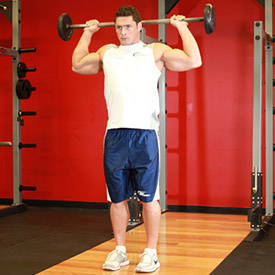
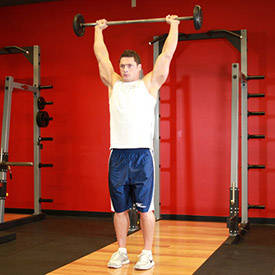
The behind-the-neck press gives us the same shoulder issues associated with the behind-the-neck pull-down. To do the movement, you must maximally externally rotate the shoulders.
Again, this places the shoulders in a very vulnerable position, which can easily result in strain in the rotator cuff muscles.
Also, as with the pulldowns, most people simply don't have the necessary shoulder flexibility to get a straight line on the movement—they must tilt their head forward to get the bar behind it, adding greatly to the possibility of injury.
Instead Do These
Exercise 4. Stiff-legged Barbell Deadlift

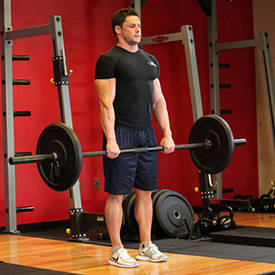
The stiff-legged deadlift, properly done, is actually a very good movement for the hamstrings, glutes and lower back. The problem comes when, in an attempt to increase the stretch on the hamstrings, the exercise is done standing on a block or bench.
To get the most stretch on the hamstrings and to protect the lower back from injury, an arch should be maintained in the lower back during the movement. It's extremely difficult to maintain an arch in the lower back when you are stretching down as far as you can towards the floor with a barbell pulling you down.
Without the arch, as a natural result, the spine will flex and the supporting muscles of the spine will relax. This places much of the tension of the exercise directly on the connective tissue and bones of the spinal column rather than the supporting muscles, which are stabilizing the spine.
In an effort to get more stretch on the hamstrings, you instead compromise the support structures of your lower back.
Exercise 5. Sit-up
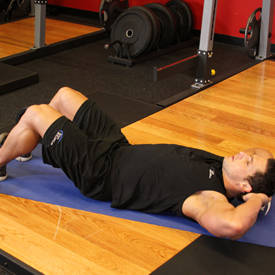
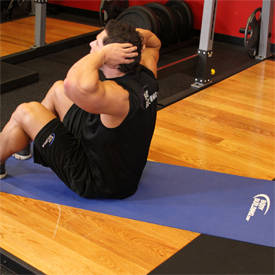
If you enjoy having a pain-free lower back, the regular floor sit-up is a good exercise to avoid. When you do a sit-up, the mechanics of the movement and position of your body throw much of the torque of the movement onto your lower back.
Your hip flexors pull directly on your spine in order to raise your torso off the floor when you do the exercise, leading to strain in the lower back area.
To top it off, the abdominal muscles (the real target of the exercise) are only worked isometrically. This means they don't actually contract and move, they just work to hold the torso steady while the hip flexors do the pulling. This is not a very effective abdominal exercise.
You will be far better off performing direct abdominal- training movements such as crunches, ball crunches, cable crunches, etc. These exercises directly target the abs without throwing excessive tension on the lower back.
An excellent exercise for the abdominals that is similar in look to the regular sit-up but focuses on the abs is the abdominal sit-up.
Conclusion
The exercises you do have a profound effect on your training and your health. Be sure to choose exercises that will help you move forward towards your goals and not set you back through injury.

